The pruning of citrus trees is one of the most daunting tasks for gardeners. There is often a fear of causing more harm than good to the cherished fruit tree. Can you prune an orange tree in summer, or prune an orange tree in autumn? With the orange tree, the goal is naturally to produce fruit, and the action is not necessarily intuitive. In this tutorial, we explain when and how to prune your orange tree.
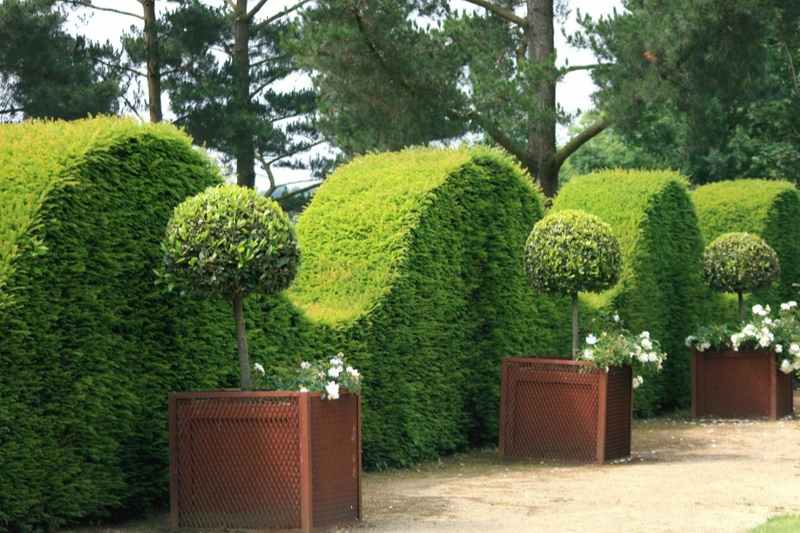
Should you prune an orange tree?
The answer is yes! Because citrus trees are among the fruit trees with pips that require pruning. Why? Mainly to ensure good fruit production, which is indeed what we desire, but also to maintain an appropriate shape and prevent leaf growth at the expense of fruit. Orange trees are no exception and require maintenance pruning.
Thus, it is primarily a fruiting pruning that gardeners will carry out on orange trees. However, like all citrus trees, it should be noted that orange trees do not tolerate rigorous pruning well, especially not for mature trees.
When to prune an orange tree? How often?
In most temperate regions, proceed during winter, between February and mid-March, before the vegetative resumption (flowering and new shoots). But never during frost or strong winds. In colder regions, delay pruning until the end of March, or even early April.
It is not advisable to prune orange trees too frequently: every 2 to 5 years is sufficient if the pruning is done correctly. When grown in pots, this interval can be shortened to 2-3 years. Do not prune a young orange tree planted for less than 3 years, as it does not yet require it.
Pruning of orange trees in the ground can be done until the beginning of April (wait until night temperatures exceed 5°C).
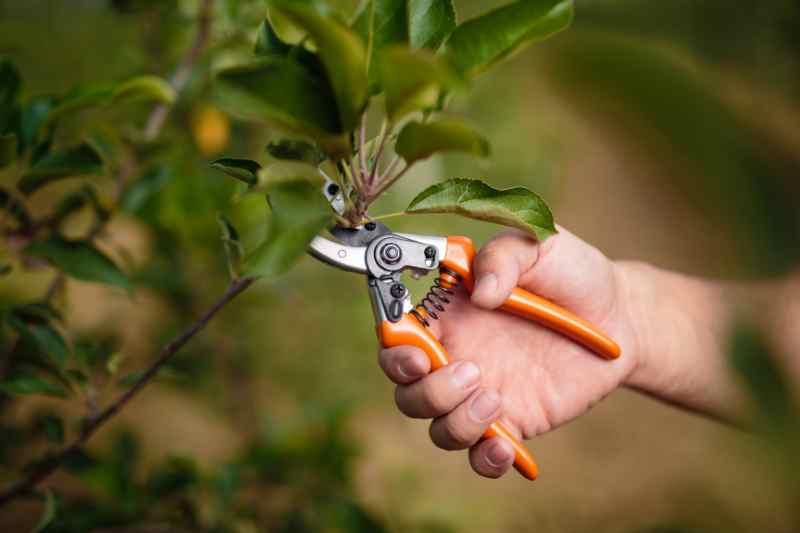
How to prune an orange tree?
Its pruning needs differ if it is planted in a pot and stored in winter, or planted in the ground in the more favourable southern regions of the country, where it grows larger. In both cases, always respect its natural habit.
Pruning an orange tree in a pot
It remains small, and we will focus on pruning mainly the dry branches, diseased and broken branches, in addition to giving it a nice shape. A generally dense crown is maintained.
Remove, using clean and disinfected pruning shears with 70° alcohol, well-sharpened to make clean cuts:
- the dry and dead branches, diseased, dying or broken branches: cut them flush or above a node (this can possibly be done in summer in case of emergency).
- the poorly placed branches, which cross inside or grow towards the centre of the crown, to allow light to enter.
- the shoots that grow vertically, as they hinder the proper circulation of sap.
- the suckers from the rootstock: remove all vigorous vertical shoots that grow below the grafting point.
Then, shape the crown into a ball or regular form to give it a little beauty: the orange tree tends to grow in a rounded manner. Respect this shape by refining rather than imposing a strict geometry:
- Prune the too long branches to balance the silhouette.
- Cut just above a bud facing outward to guide the shape.
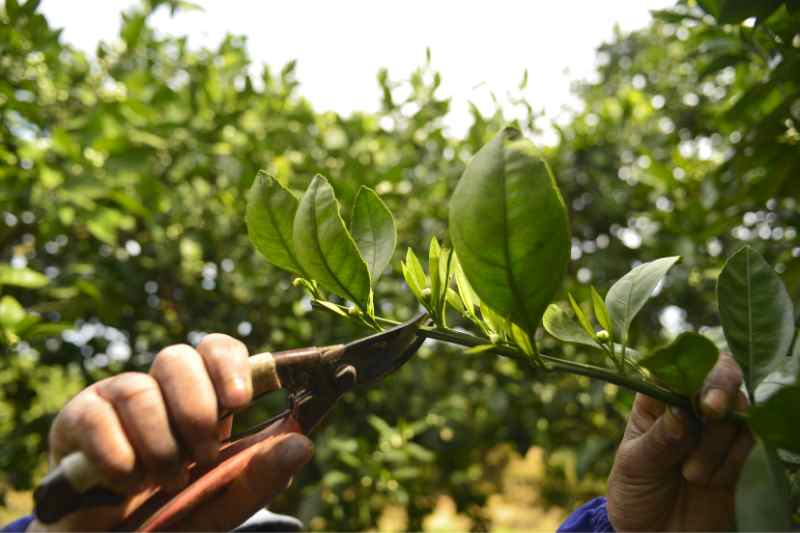
- Check that the orange tree is well balanced in its pruning by stepping back a few paces to check the uniformity of the ball shape. If one side is denser, thin it out slightly.
- Pinch the young shoots in formation (light green in colour) above a bud facing outward to densify the foliage and refine the shape, during April-May. This pinching is done only on the new shoots of the year, never on branches that have already matured.
- Once the pruning is done, water your orange tree, which has indeed undergone stress from this operation. You can resume fertilisation for the season about fifteen days later.
In the end, you will have removed only a maximum of 15-20% of the vegetation, to avoid stressing the tree, whether it is grown in a pot or in the ground. This light pruning will be even more so on a vigorous orange tree. You can only prune more severely a struggling or weak orange tree.
Pruning an adult orange tree in the ground
This is a different story, as they become much larger and often bend under the weight of the fruit. Some aging orange trees require rejuvenation pruning, which we will not cover here. In any case, do not touch the main branches, as orange trees heal poorly or very slowly after severe cuts.
Important! : when working on multiple trees, always disinfect your tools between trees.
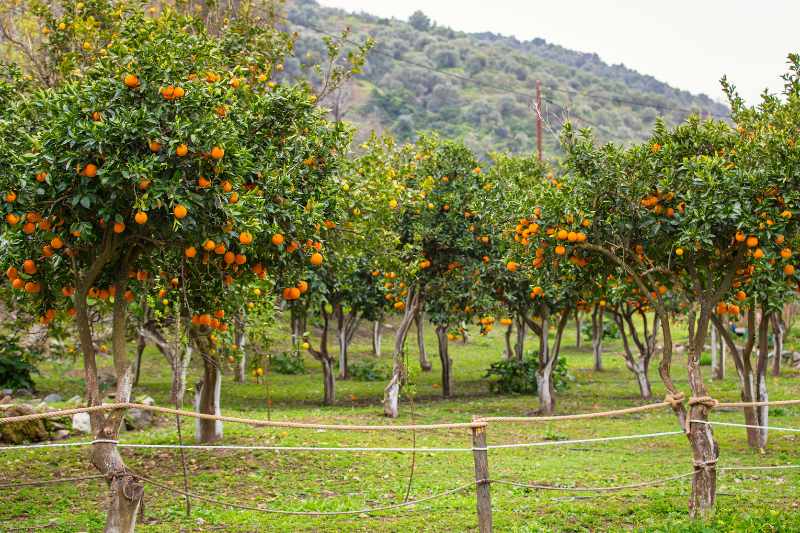
Pruning of cultivated trees requires, even more than for a potted orange tree, ventilation to allow air to circulate well and light to enter. This will limit the possible frequent diseases of the orange tree (mal secco, thrips, phytophthora, tristeza…).
- Always work inside the tree, from the bottom to the top of the tree.
- Clear the base of the tree by removing a third or all parts of the lower branches that grow at the base of the trunk and touch the ground. This will prevent issues of spreading, humidity, and possible diseases. Do not prune too low either to protect the bark of the trunk from sunburn in the hottest regions.
- Remove the suckers identifiable by their upright appearance, and any shoots if present.
- Optionally protect the trunk with a jute sleeve, a "skirt" to control possible pests and rodents. Anti-rodent nets protect against voles, especially in winter. Avoid plastic materials that retain moisture.
- As with the potted orange tree, ventilate and thin out the inside of the tree, cut dead and damaged branches, branches that cross, keeping in mind a pruning volume of less than 20%, as the foliage provides the necessary shade for the tree in summer.
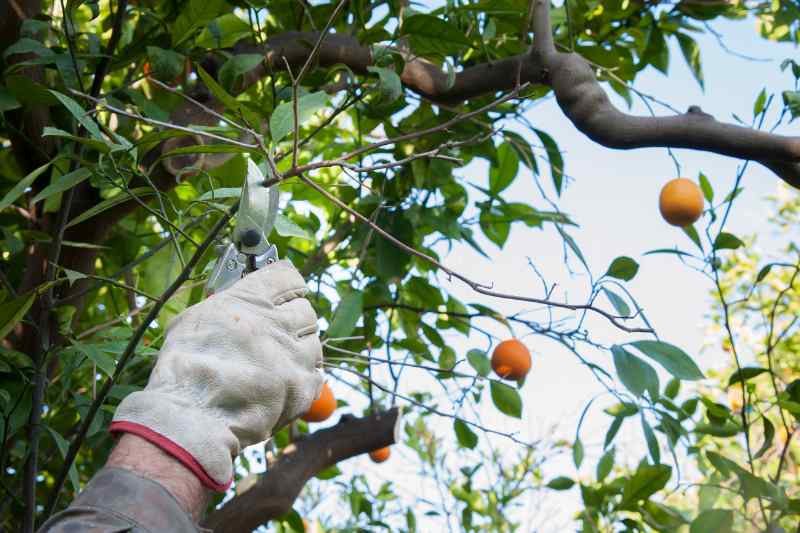
- Eliminate dominant vertical branches.
- Only on very productive orange trees, where the weight of the fruit risks breaking some branches, a reduction pruning (or 'drop-crotch') can be performed: a kind of reasoned topping, shortening the branch just above a strong lateral branch to prevent breakage.
- Step back and check the overall appearance of the orange tree: you must respect its natural silhouette.
































Comments